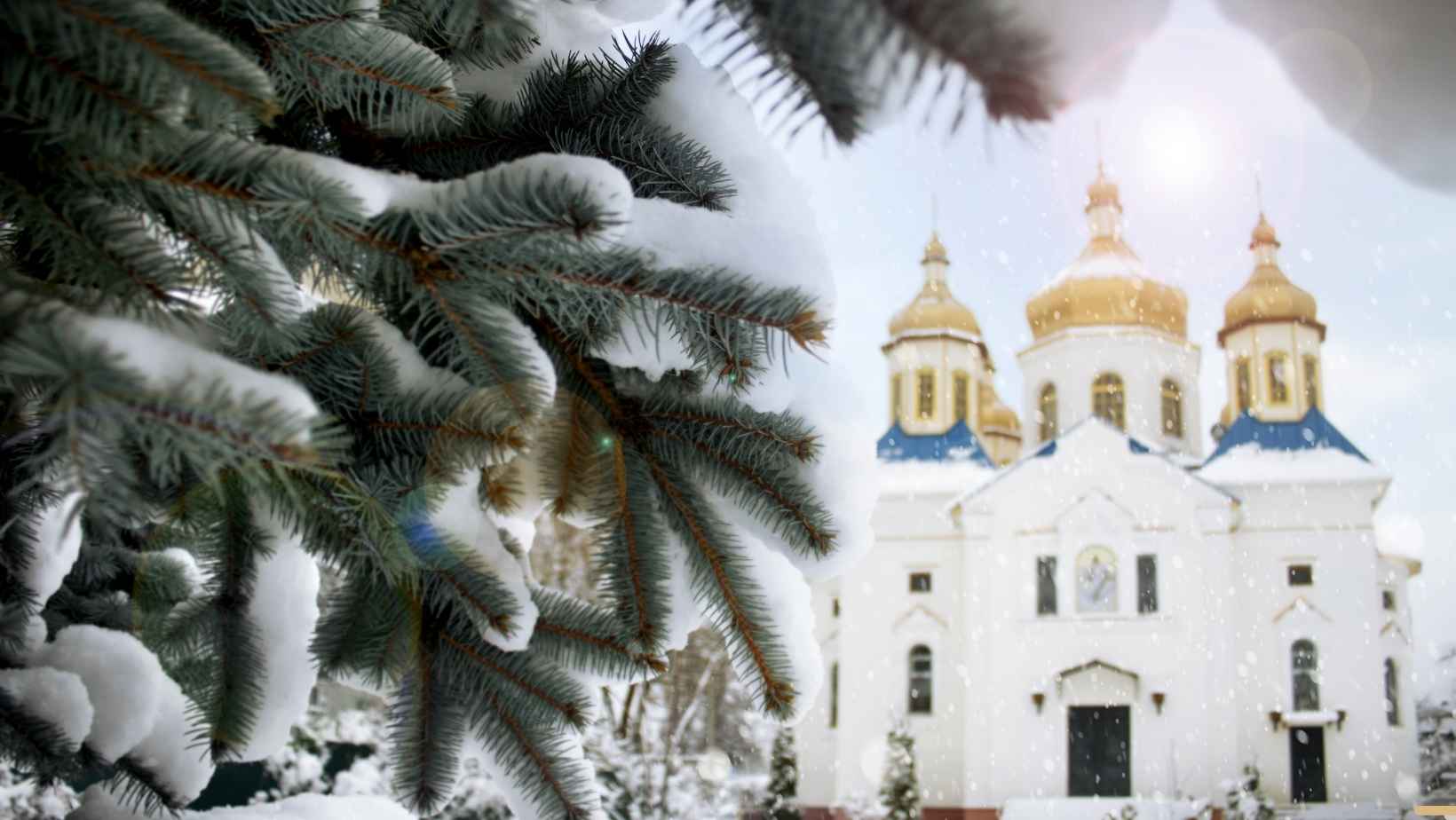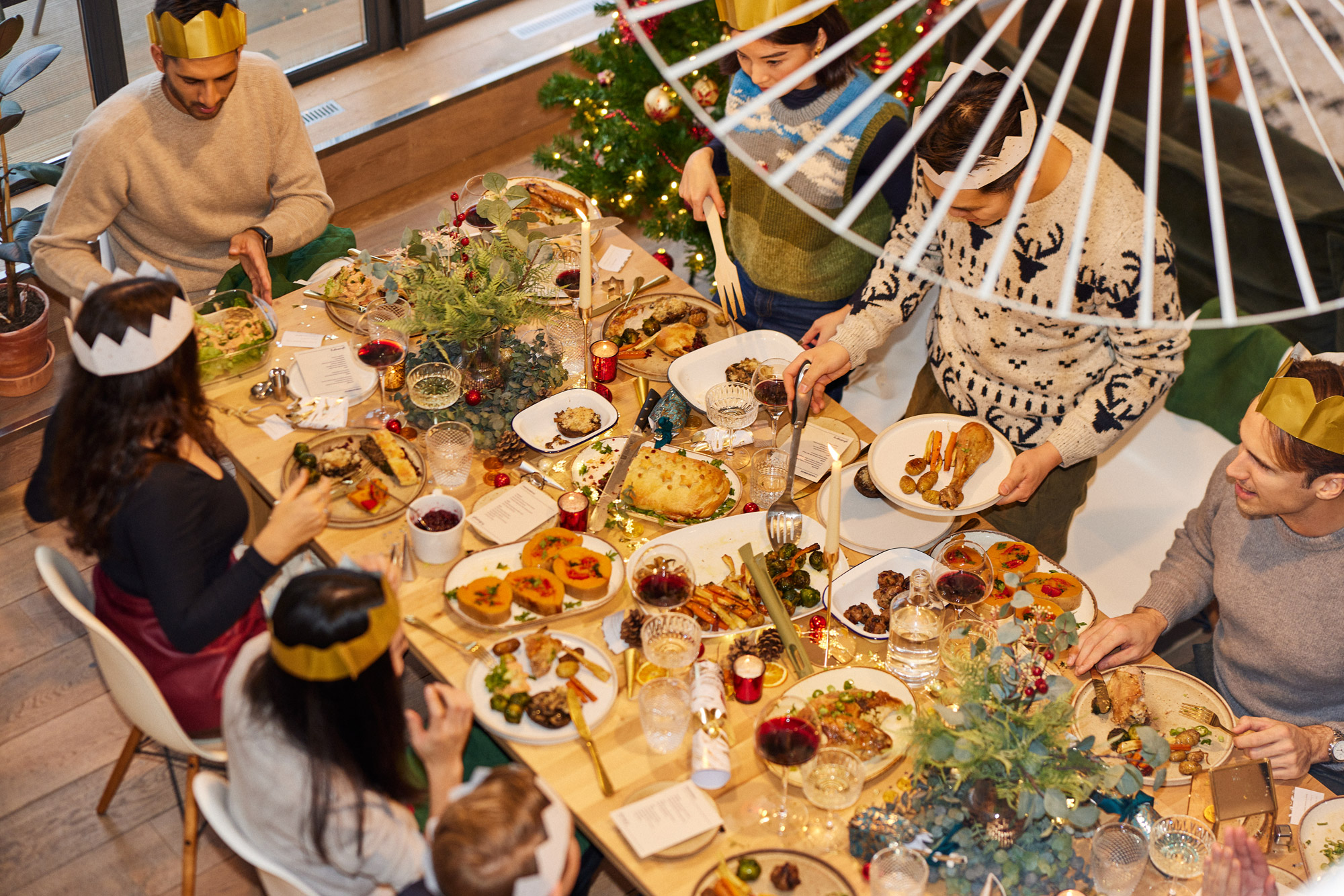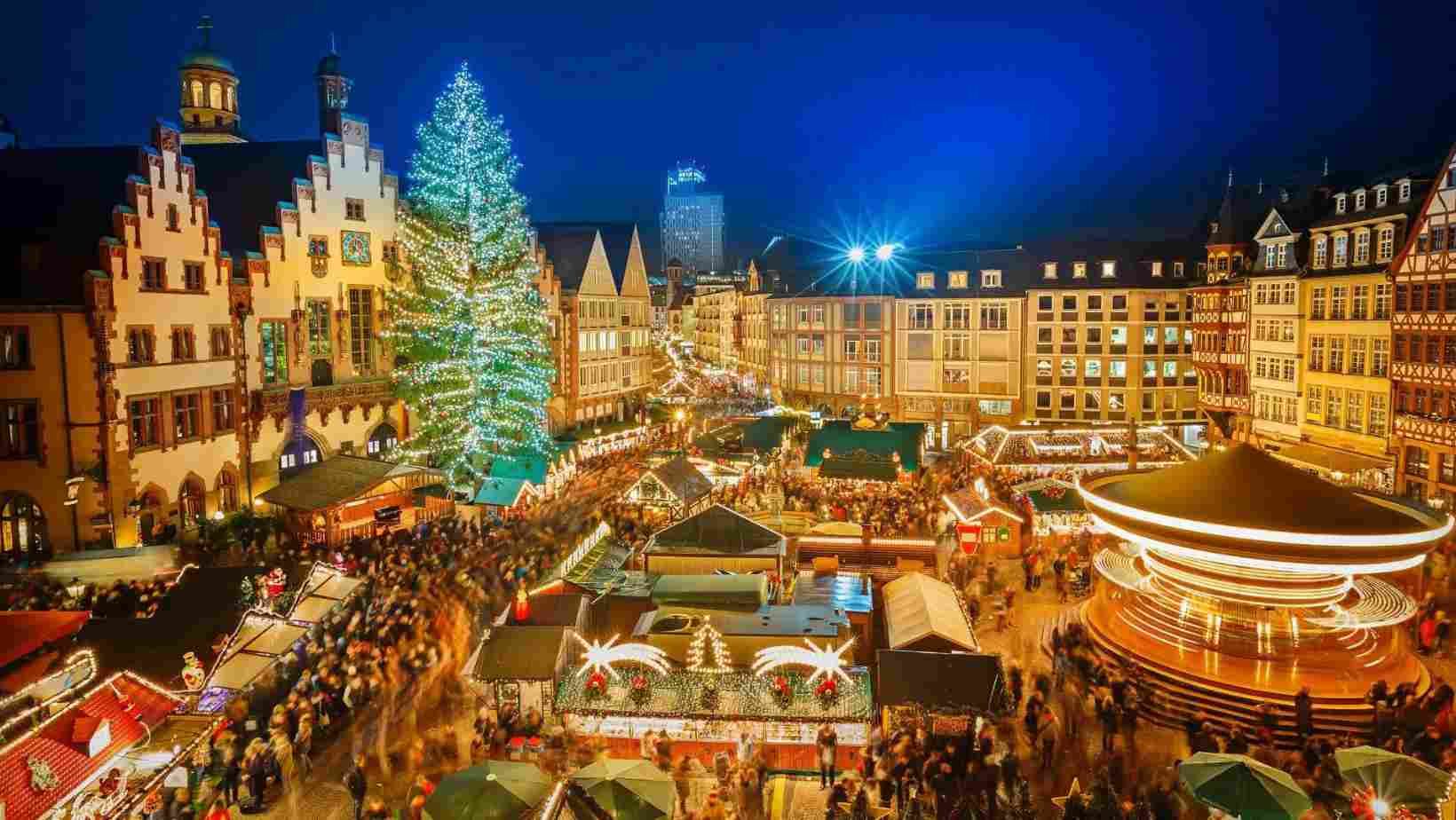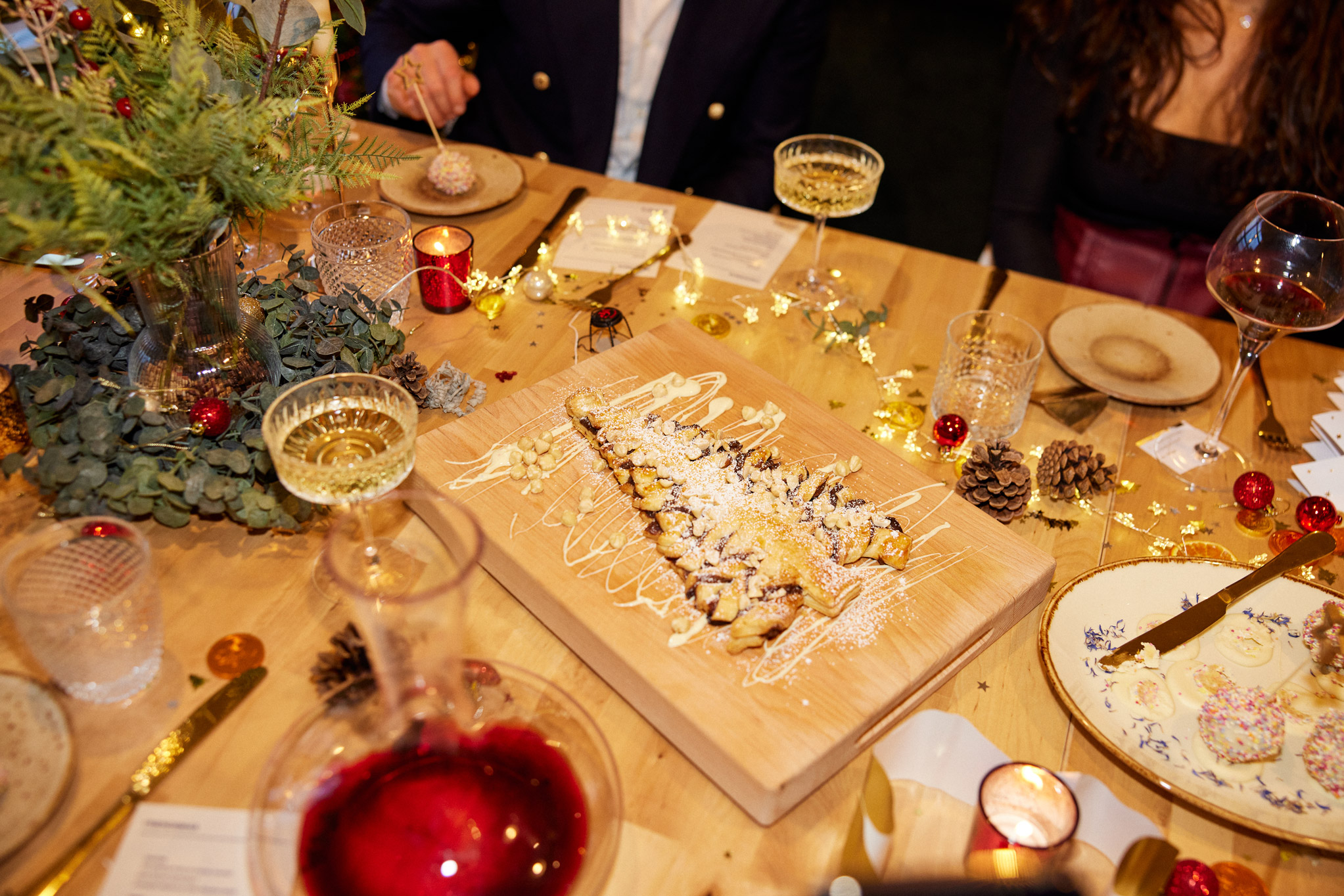Ukrainian Christmas Food: 12 Symbolic Dishes of Sviat Vechir
12 Dishes of Sviat Vechir: The Heart of Ukraine Christmas Food Traditions
The 12 dishes representing the 12 apostles are entirely meatless and dairy-free and rich in grains, beans, and vegetables. They symbolise purity, simplicity, and a connection to the earth. Let’s begin our journey through the twelve traditional dishes of Ukrainian Christmas, each one carrying its own meaning and adding to the spirit of Sviat Vechir.
1. Kutia (Grain Dish)
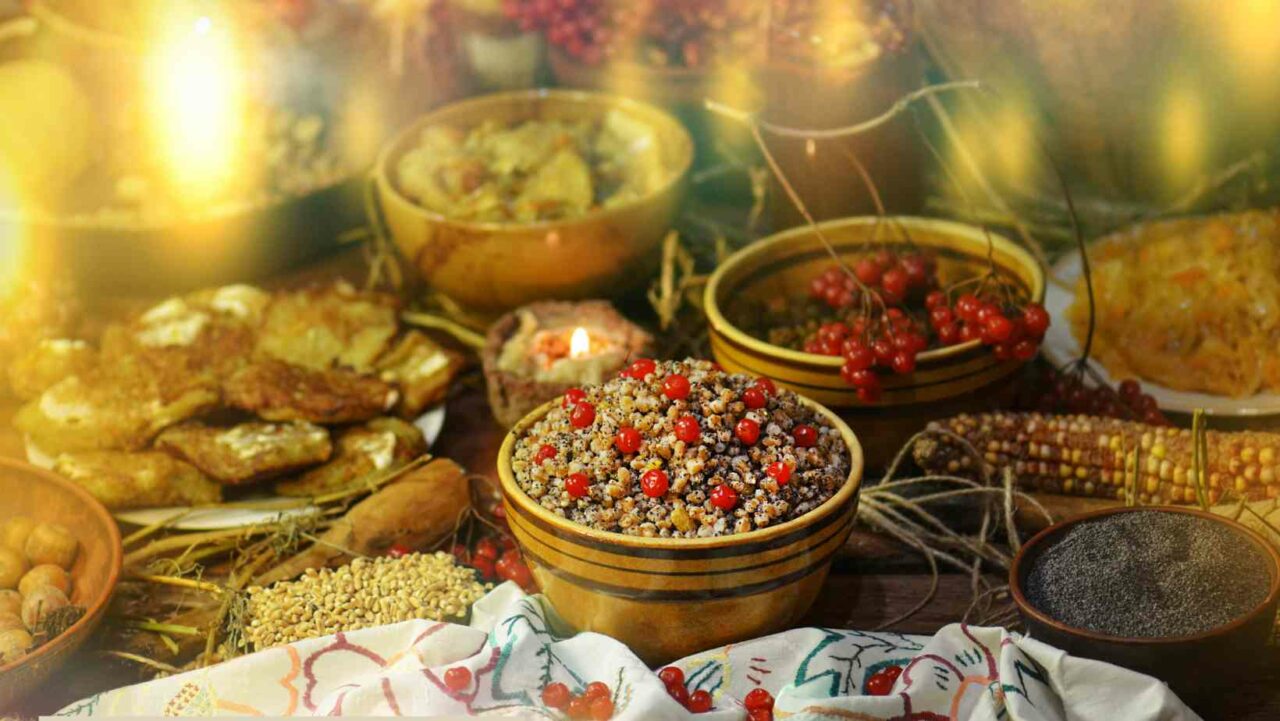
This dish is at the heart of Ukrainian Christmas food, symbolising prosperity, family unity, and connection to the past. Made primarily from wheat berries, Kutya includes other ingredients like honey, poppy seeds, nuts and dried fruits. The wheat symbolises abundance and fertility, the honey embodies happiness and love, while the poppy seeds are thought to represent eternal life or the souls of the departed. Preparing Kutya involves soaking wheat berries overnight, boiling them, and mixing them with honey and poppy seeds for a heartwarming treat.
It is often the first dish eaten during the Christmas Eve meal, and it is traditionally shared from a common bowl, reflecting the unity of the family. Some families may even toss a spoonful of Kutia to the ceiling—if it sticks, it is said to predict a good harvest for the coming year. This practice links the dish to both spiritual beliefs and agricultural hopes, making it a vital part of the celebration
Highlights
- Dish Type: Grain-based Dish. Traditional must-have dish.
- Symbolism: Represents prosperity, family unity, and connection to ancestors.
- Dietary Considerations: Vegan and contains gluten.
- Variations: Western Ukraine uses raisins and walnuts; Eastern Ukraine prefers honey and poppy seeds. Dried apricots or cherries may also be added.
2. Borscht (Beet Soup)

Borscht is a beloved Ukrainian soup that holds a special place during Sviat Vechir, prepared in a meatless version for the Christmas Eve feast. This colourful beet soup is rich in flavour and symbolism. The deep red colour of borscht represents life and sacrifice, connecting it to themes of renewal and warmth.
It embodies the spirit of togetherness, with families gathering around to enjoy its warmth, reflecting the comfort found in each other’s company. The preparation of borscht requires slow simmering of beets, carrots, onions, and other root vegetables, creating a hearty dish that provides comfort during the cold winter season.
Highlights
- Dish Type: Soup. Traditional must-have dish.
- Symbolism: Represents warmth, life, and familial bonds.
- Dietary Considerations: Vegan and gluten-free.
- Variations: Western regions may add kidney beans; fermented beet kvass is used for a sour flavour in some areas. Typically served with vushka (mushroom dumplings).
3. Varenyky (Dumplings)
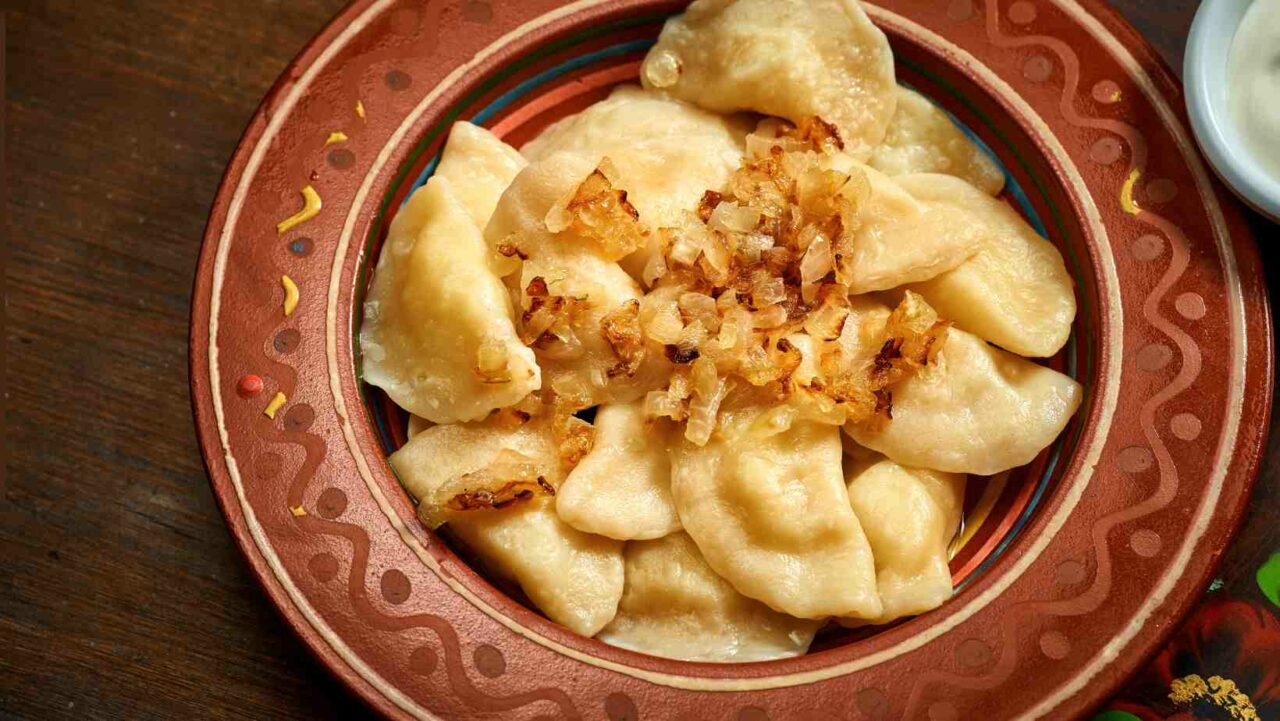
Varenyky are dumplings typically filled with potatoes, mushrooms, sauerkraut or minced meat and served with a drizzle of fried onions. However, sweet variants, filled with fruits like cherries, strawberries, or apples, are equally adored. During Sviat Vechir, the fillings are vegetarian, adhering to the fasting rules. The symbolism of Varenyky lies in their shape and the fact that they are filled, representing prosperity and the bounty of the harvest.
In their simplest form, varenyky are made from a mixture of flour, water, and salt, crafted into dough. This unassuming exterior then serves as a canvas for the delectable fillings that lie within. The most traditional varieties are filled with potato and onion, sauerkraut, or minced meat. Different regions of Ukraine may have their own unique versions.
Highlights
- Dish Type: Dumplings.
- Symbolism: Represents abundance, comfort, and prosperity.
- Dietary Considerations: Vegetarians and contains gluten.
- Variations: Fillings vary by region—sauerkraut, cabbage, mushrooms, or buckwheat. Replaced by Pelmeni or Pierogi in some areas.
4. Holubtsi (Cabbage Rolls)
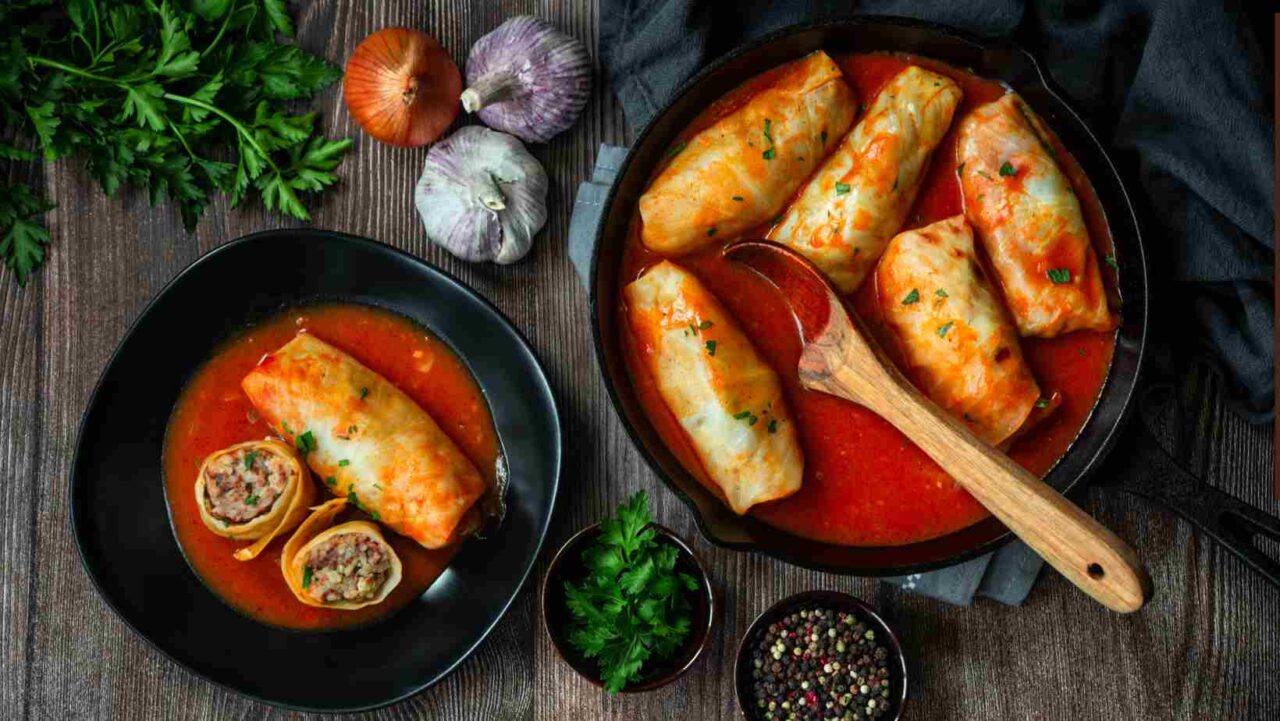
Holubtsi, or cabbage rolls, are another essential dish served during Sviat Vechir. For this festive occasion, cabbage leaves are stuffed with a mixture of rice and sautéed vegetables, often including carrots, onions, and mushrooms. The vegetarian filling aligns with the fasting tradition of the Christmas Eve meal, keeping the dish meat-free and focusing on the earth’s bounty.
Holubtsi is prepared by slowly baking the cabbage rolls in a tomato-based sauce, allowing the flavours to meld together, resulting in a rich, savoury taste. The rolls are believed to symbolise the nurturing embrace of the family, as the cabbage leaf wraps around the filling, much like the warmth and protection of a family unit.
Highlights
- Dish Type: Stuffed vegetable preparation.
- Symbolism: Represents comfort, resilience, and family unity.
- Dietary Considerations: Vegan and gluten-free.
- Variations: Traditional cabbage rolls are sometimes replaced with stuffed peppers, using similar fillings like rice, millet, or vegetables.
5. Uzvar (Dried Fruit Compote)
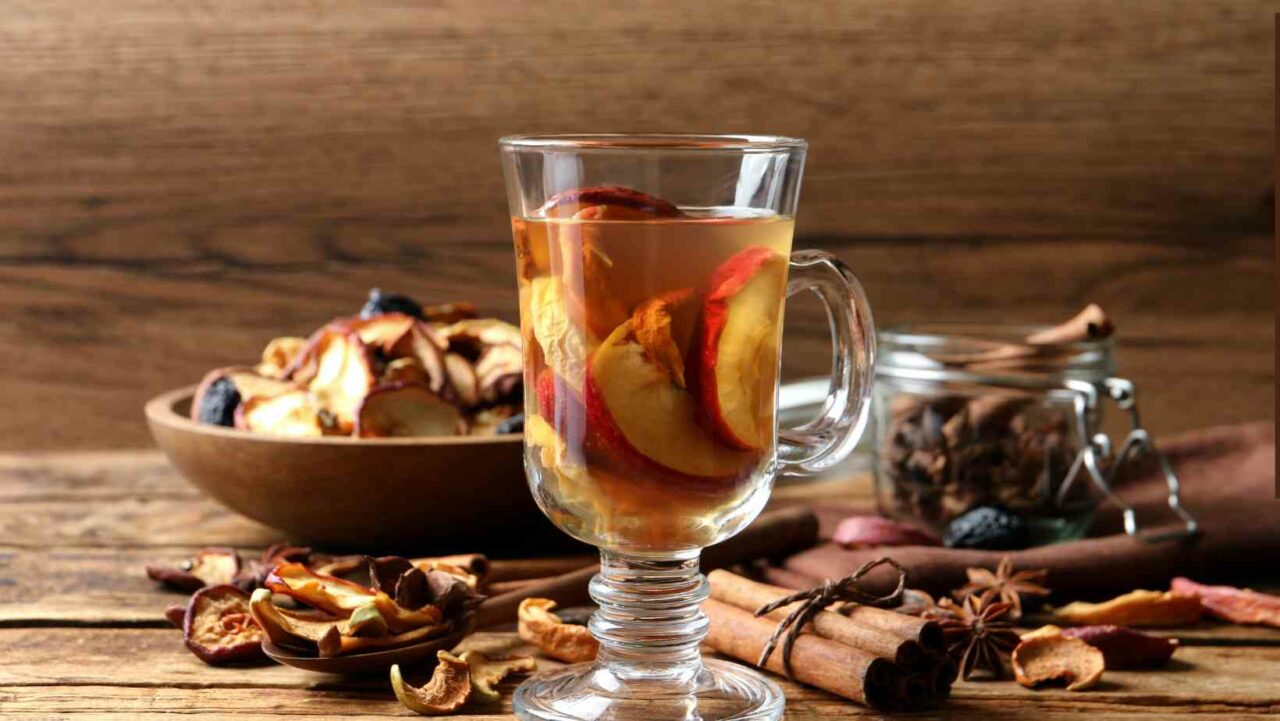
Uzvar is a traditional beverage served during Sviat Vechir. Uzvar recipe consists of simmering a mix of dried fruits such as prune, apricots, pears and apples. This naturally sweet compote embodies simplicity and gratitude for the harvest, using ingredients that were preserved from the previous growing season. The symbolism of Uzvar lies in its representation of life and vitality, as the dried fruits used are seen as a reminder of the summer’s bounty and the resilience of nature.
Uzvar’s flavour is subtly sweet, enhanced by spices like cinnamon or cloves, which makes it a comforting and refreshing part of the Christmas Eve meal. The drink is often served cool and provides a contrast to the richer dishes on the table, helping to cleanse the palate and bring a sense of balance to the meal.
Highlights
- Dish Type: Beverage. Traditional must-have dish.
- Symbolism: Represents life, vitality, and gratitude for the harvest.
- Dietary Considerations: Vegan and gluten-free.
- Variations: May include different combinations of dried fruits and spices, depending on family preferences.
6. Pampushky (Sweet or Savoury Doughnuts)
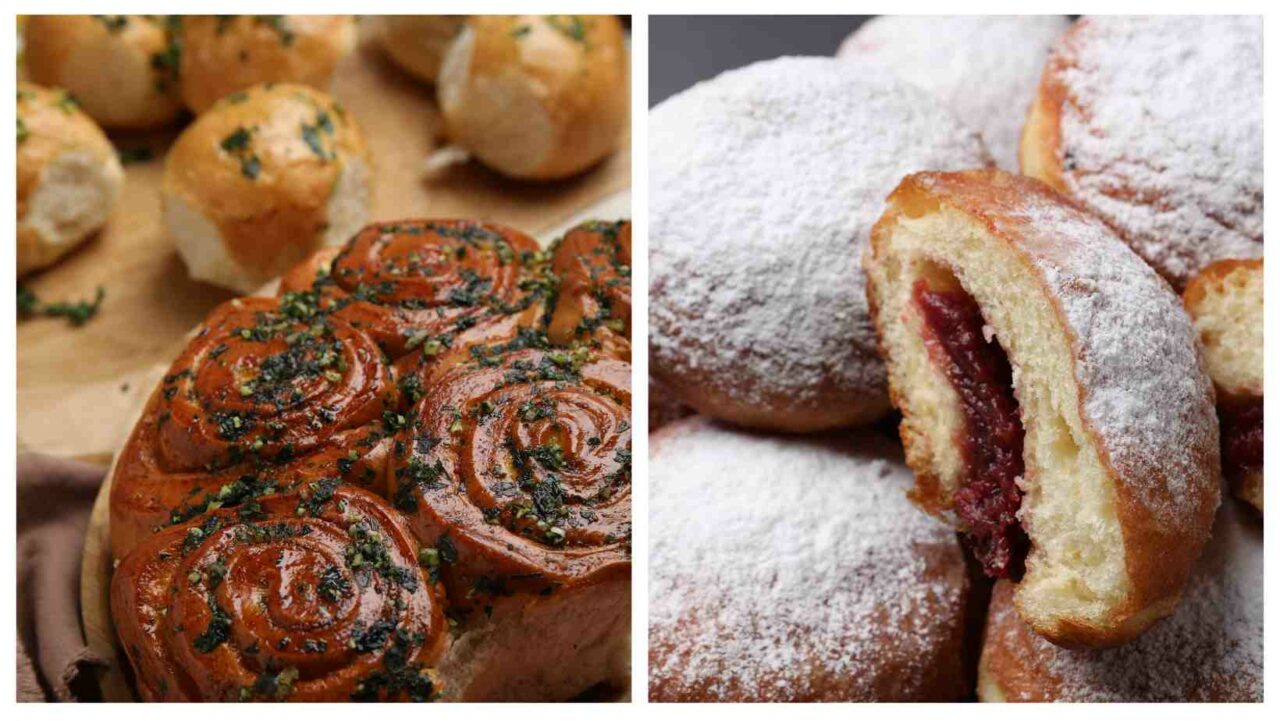
Pampushky are small doughnuts that can be either sweet or savoury and are often served as a sweet treat or accompaniment to borscht. The sweet version is typically filled with fruit preserves or poppy seeds and dusted with powdered sugar, while the savoury version might be flavoured with garlic or herbs. The symbolism of Pampushky lies in their round shape, which represents wholeness, unity, and the cycle of life.
The preparation of pampushky involves creating a yeast-based dough that is allowed to rise until it has doubled in size, ensuring the finished product will be light and airy. The dough is then shaped into small balls or rounds, deep-fried, and finally flavoured or filled according to preference. Perfect for sharing and enjoyed by all ages, pampushky is a delightful expression of Ukrainian culture
Highlights
- Dish Type: Dessert or side dish.
- Symbolism: Represents wholeness, unity, and the cycle of life.
- Dietary Considerations: Vegetarian and contains gluten.
- Variations: Can be replaced by korovai or babka, depending on regional preferences.
7. Kapusnyak (Sauerkraut Soup)
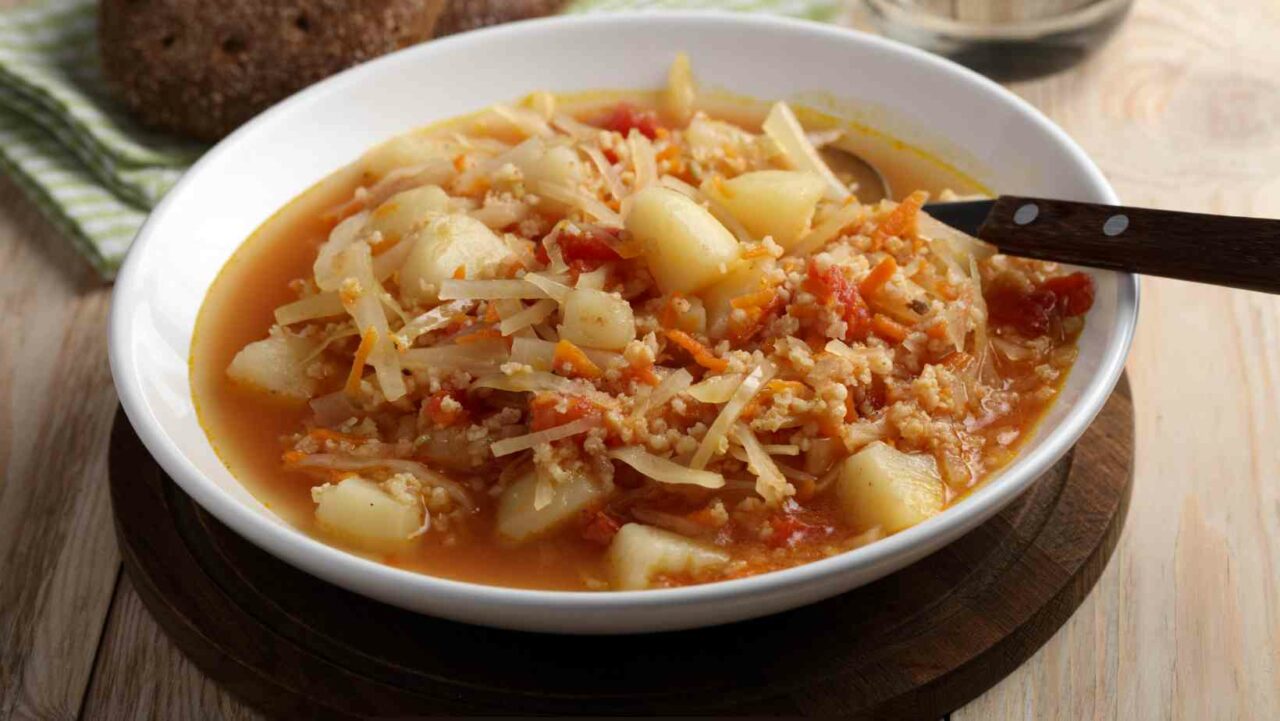
Kapusnyak is a hearty sauerkraut soup served during Sviat Vechir. Made with fermented cabbage (sauerkraut), potatoes, and other root vegetables, this dish offers a tangy flavour that contrasts well with the other dishes on the Christmas Eve table. It can be served as an appetiser or as a main course.
The use of sauerkraut symbolises preservation and resourcefulness, as it is made from cabbage harvested and preserved for the winter months. Kapusnyak represents the resilience of the Ukrainian people and their ability to make nourishing meals from simple, stored ingredients during the cold months. The soup provides warmth and comfort, making it a meaningful addition to the feast.
Highlights
- Dish Type: Soup.
- Symbolism: Represents preservation, resilience, and resourcefulness.
- Dietary Considerations: Vegan and gluten-free.
- Variations: Can be replaced with simpler cabbage soup or borscht. Mushrooms or parsnips may be added for extra depth.
8. Pidpenky Sauce(Mushroom Gravy)
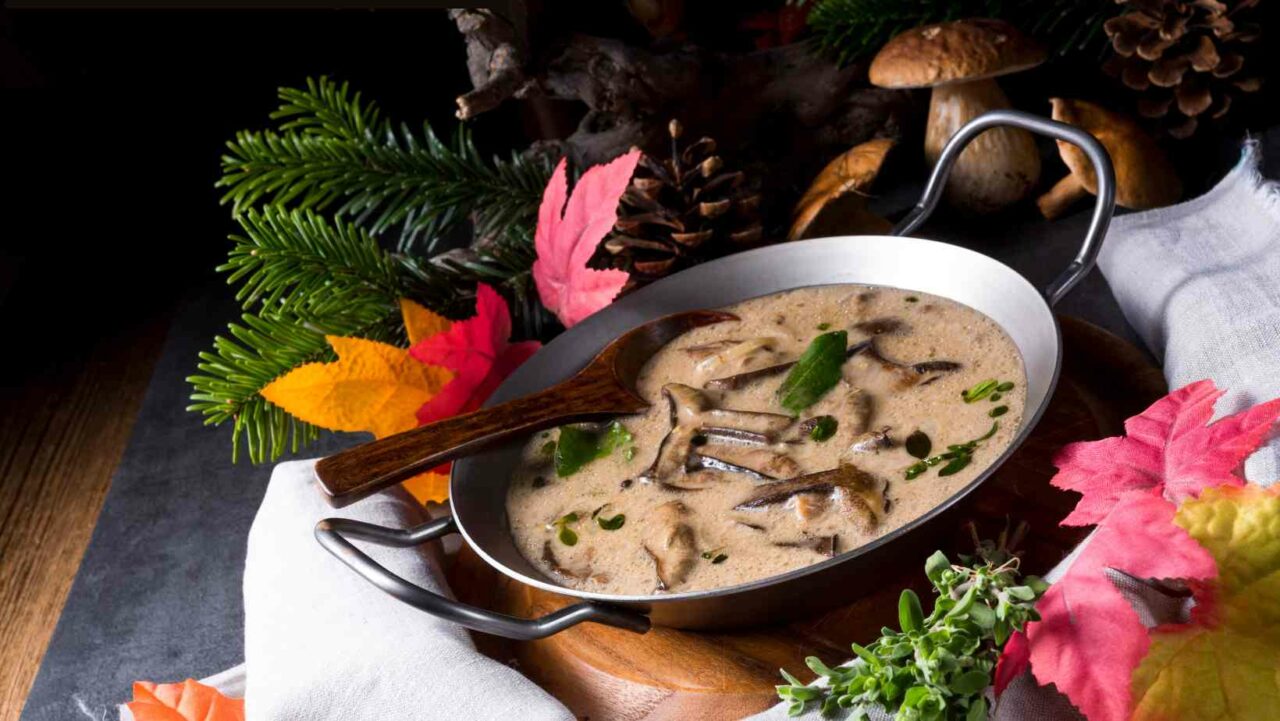
Mushroom Gravy, often referred to as Pidpenky Sauce, is a traditional Ukrainian Christmas side dish, providing a rich and earthy flavour that complements many of the other dishes. This gravy is prepared using wild mushrooms, typically dried for preservation and rehydrated before cooking. The sauce is then thickened with flour and enhanced with sautéed onions to bring out the natural umami taste of the mushrooms.
The use of wild mushrooms is significant, as they are foraged from the forests, symbolising a connection to nature and a respect for the earth’s resources. Pidpenky Sauce is often served alongside Varenyky or Holubtsi, adding a comforting, velvety texture and depth to these dishes. However, it can be replaced with another vegetable-based sauce or gravy, depending on regional or family preferences.
Highlights
- Dish Type: Sauce/Gravy. Common dish at Sviat Vechir.
- Symbolism: Represents a connection to nature and respect for the earth’s bounty
- Dietary Considerations: Vegan, contains gluten
- Variations: Can be replaced with a dill-based gravy or garlic-onion sauce, depending on regional customs.
9. Jellied Fish (Fish in Aspic)
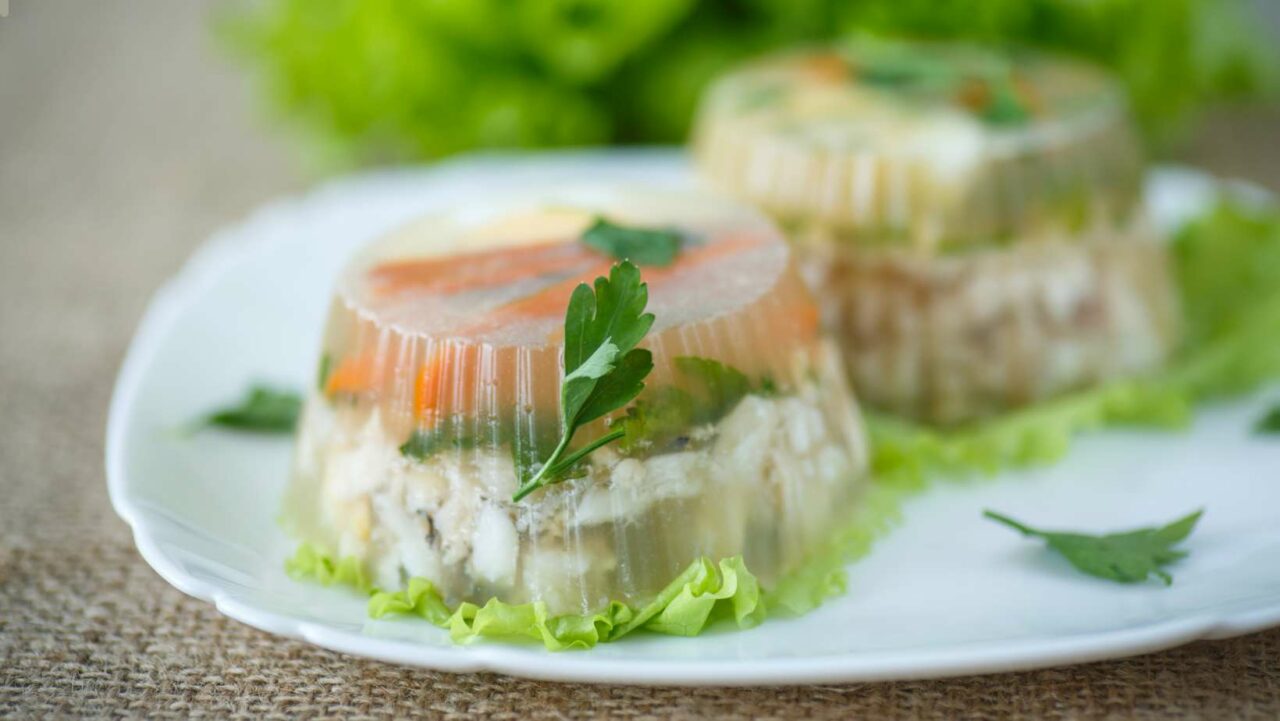
Jellied Fish, also known as Fish in Aspic, is a variation of the traditional Ukrainian dish Kholodets, typically served as Christmas Ukrainian food. Made with fish such as carp, pike, or trout, it is cooked in a seasoned broth that is then cooled and combined with natural gelatin from the fish itself to form a jelly-like consistency. Once the fish is cooked, it is skinned, deboned, and arranged in a mould along with the broth. The dish is then left to set until firm, resulting in a savoury, refreshing appetiser that contrasts well with the other dishes of the feast.
Jellied Fish symbolises abundance and a connection to Ukraine’s rivers and natural waters. It reflects the importance of preserving food, especially during winter, when fresh ingredients can be scarce, much like its meat-based counterpart, Kholodets.
Highlights
- Dish Type: Appetiser.
- Symbolism: Represents abundance and connection to natural waters.
- Dietary Considerations: Gluten-free.
- Variations: Can be replaced with baked fish or pickled herring, depending on regional customs.
10. Kalach (Ceremonial Braided Bread)
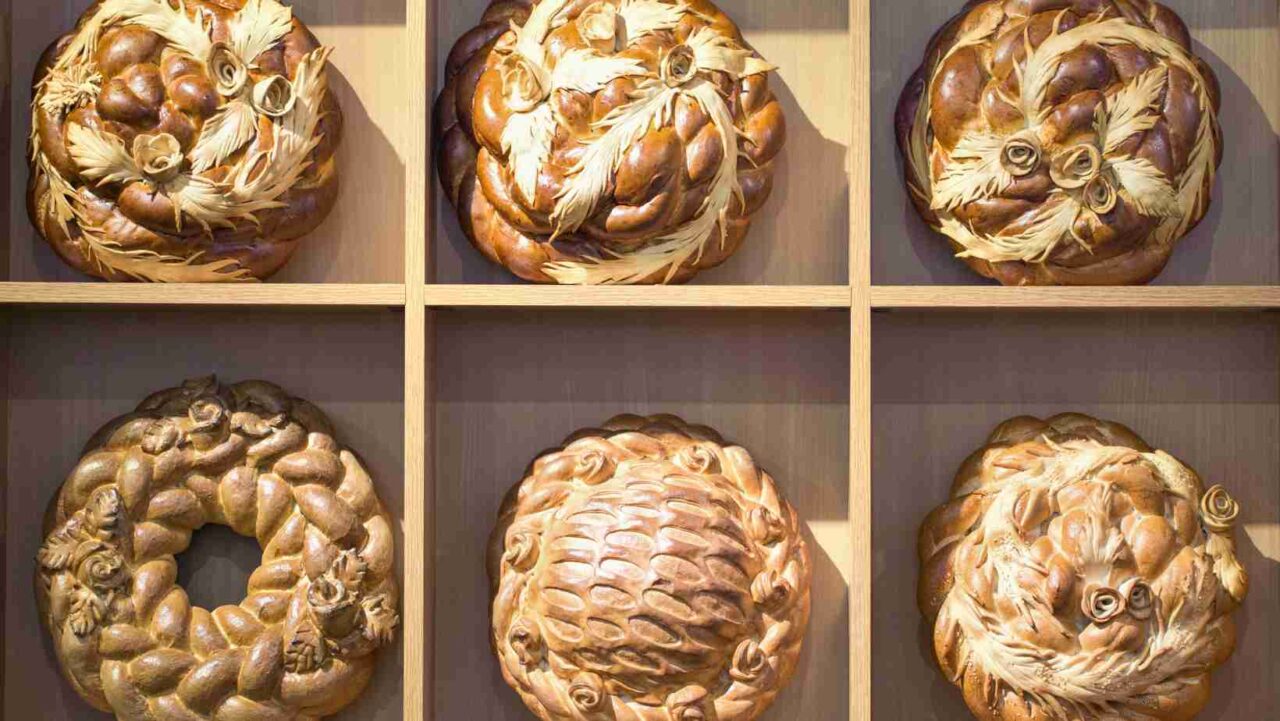
Kalach is a ceremonial braided bread that holds a special place in Ukrainian Christmas Eve celebrations. This Ukrainian Christmas bread recipe is typically made from wheat flour and shaped into an elaborate braid, symbolising eternity and prosperity. The braiding of the dough represents the intertwined nature of family bonds, and each bite serves as a reminder of the love shared among the household.
Kalach is slightly sweetened and can be sprinkled with poppy seeds to add texture and flavour. This bread is not only delicious but also an important symbol, reflecting the agricultural heritage of Ukraine and the significance of bread as a staple of life. It is often shared with everyone at the table, reinforcing the themes of togetherness and gratitude.
Highlights
- Dish Type: Bread.
- Symbolism: Represents eternity, prosperity, and family unity.
- Dietary Considerations: Vegetarian and contains gluten
- Variations: Can be replaced with Korovai or braided challah, depending on regional influences.
11. Vinegret (Beet and Vegetable Salad)
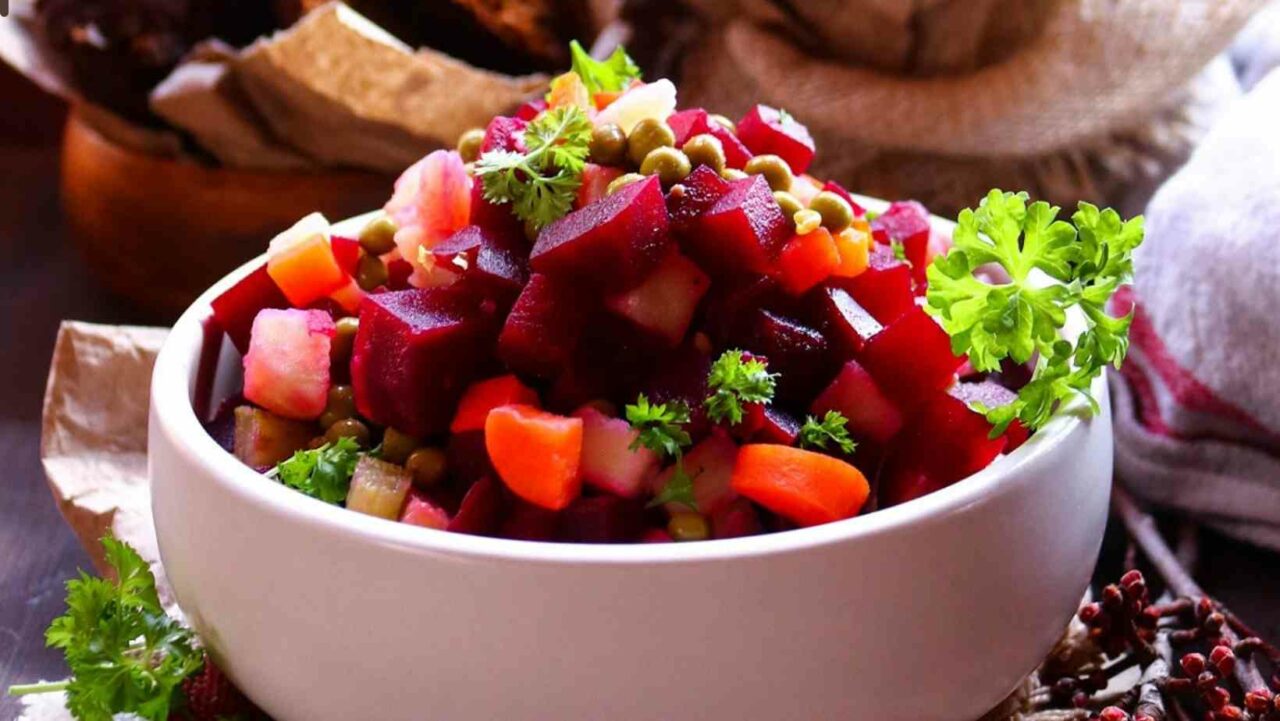
Vinegret is a beet and vegetable salad that is often included in the Sviat Vechir feast. Made with boiled beetroots, carrots, potatoes, pickles, onions, and sometimes peas, all dressed in sunflower oil, this colourful dish offers a refreshing and slightly tangy flavour that contrasts well with the richer dishes on the table.
The symbolism of Vinegret lies in its simplicity and use of vegetables, which are commonly available during winter. It represents the resourcefulness of Ukrainian families in making the best use of what they have, as well as a celebration of the harvest. Each ingredient adds a different texture and taste, making it well-loved Ukrainian Christmas food.
Whether you're hosting a special celebration dinner, looking for a chef during your holiday or weekly meal prep, we will match you to the perfect chefs.
Start hereHighlights
- Dish Type: Salad.
- Symbolism: Represents resourcefulness and celebration of the harvest.
- Dietary Considerations: Vegan and gluten-free.
- Variations: Can be replaced with beetroot and apple salad or cabbage slaw, depending on family traditions.
12. Perekladanets (Layered Festive Pastry)
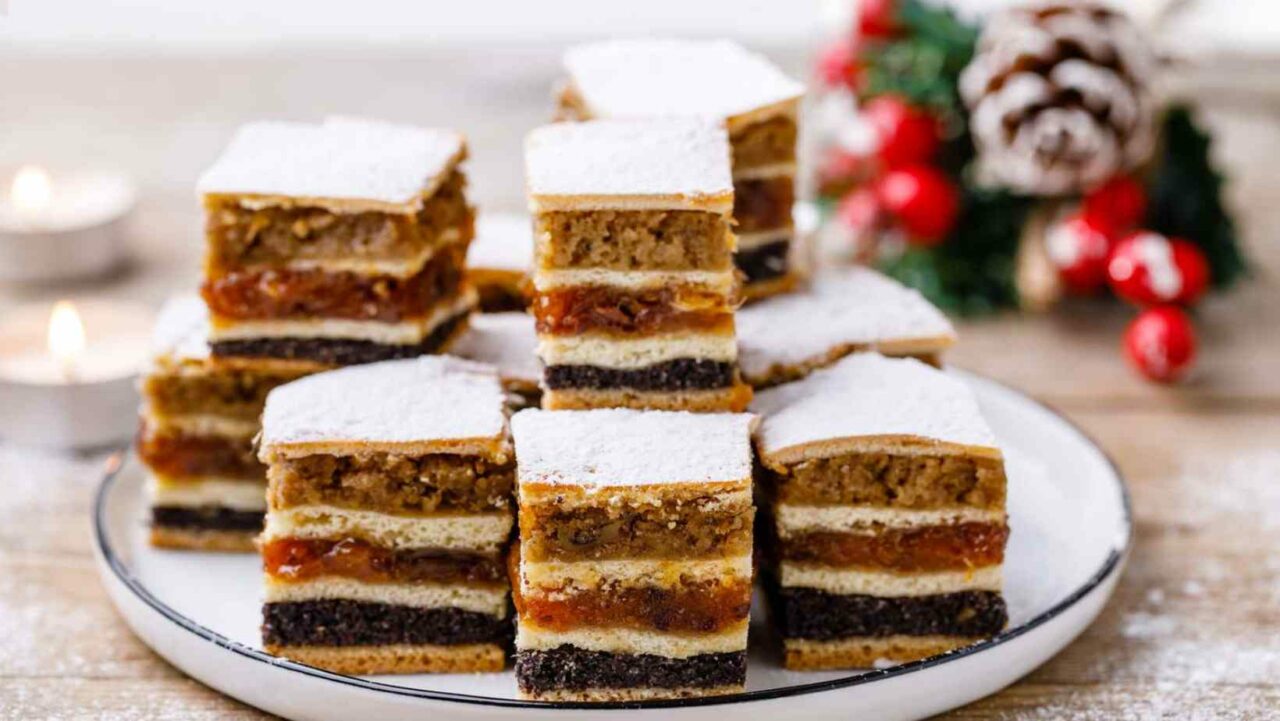
Perekladanets is a festive layered pastry and a popular Ukraine Christmas food. It is made by alternating layers of soft yeast dough with different fillings, such as poppy seeds, walnuts, and fruit preserves. The pastry is baked until golden, resulting in a beautiful, decorative treat that is perfect for special occasions like Sviat Vechir.
The symbolism of Perekladanets lies in its layered structure, which represents abundance, complexity, and the diverse blessings of life. The variety of fillings also signifies the richness of the Ukrainian land and the importance of sharing these blessings during the festive season. Perekladanets are often enjoyed at the end of the Sviat Vechir meal, providing a sweet conclusion to the evening.
Highlights
- Dish Type: Dessert.
- Symbolism: Represents abundance, diversity, and the blessings of life.
- Dietary Considerations: Vegetarian and contains gluten and nuts.
- Variations: Can be replaced with Makivnyk (poppy seed roll), depending on regional customs.
Bring the Tradition of Ukraine’s Christmas Dinner to Your Table
Christmas Eve is too special not to be earmarked with delicious Ukrainian Christmas food.
However, recreating an authentic Sviat Vechir feast can be a challenge, especially with the need for precise ingredients, traditional preparation techniques, and the time commitment required to do justice to each dish.
For those who wish to experience the full depth of Ukrainian Christmas without the stress of cooking, hiring a private chef can be the perfect solution. A skilled chef can ensure that each dish is prepared with care, allowing you and your family to focus on the joy of the occasion rather than the logistics of the kitchen.
Platforms like yhangry offer access to talented chefs across the UK who can bring the essence of Sviat Vechir to your home. Apart from providing end-to-end services from shopping for produce to cleaning up, these chefs will ensure that the spirit of Ukrainian Christmas dinner is well represented.
- Why is there no meat on Ukrainian Christmas?
-
The 12 dishes of Ukrainian Christmas are meatless and dairy-free to adhere to the fasting tradition leading up to Christmas. This represents purity and simplicity and honours the customs of the Lenten fast that ends on that day.
- Why do Ukrainians celebrate Christmas late?
-
Ukrainians celebrate Christmas on January 7th according to the Julian calendar, which is used by many Eastern Orthodox and Greek Catholic churches. This calendar lags 13 days behind the Gregorian calendar used by most of the world. However, in 2023, Ukraine celebrated Christmas on December 25 for the first time since 1917. The change was made to align Ukraine with the Western calendar and reduce Russian influence.
- Can I prepare an authentic Ukrainian Christmas dinner if I am in the UK?
-
Many traditional Ukrainian ingredients are now available in speciality stores or online in the UK, making it possible to prepare the 12 Ukrainian Christmas dishes. However, if you find the preparations challenging or want to ensure authenticity, you can hire a private chef through platforms like yhangry to help create an authentic Sviat Vechir feast without the stress of doing it all yourself.
